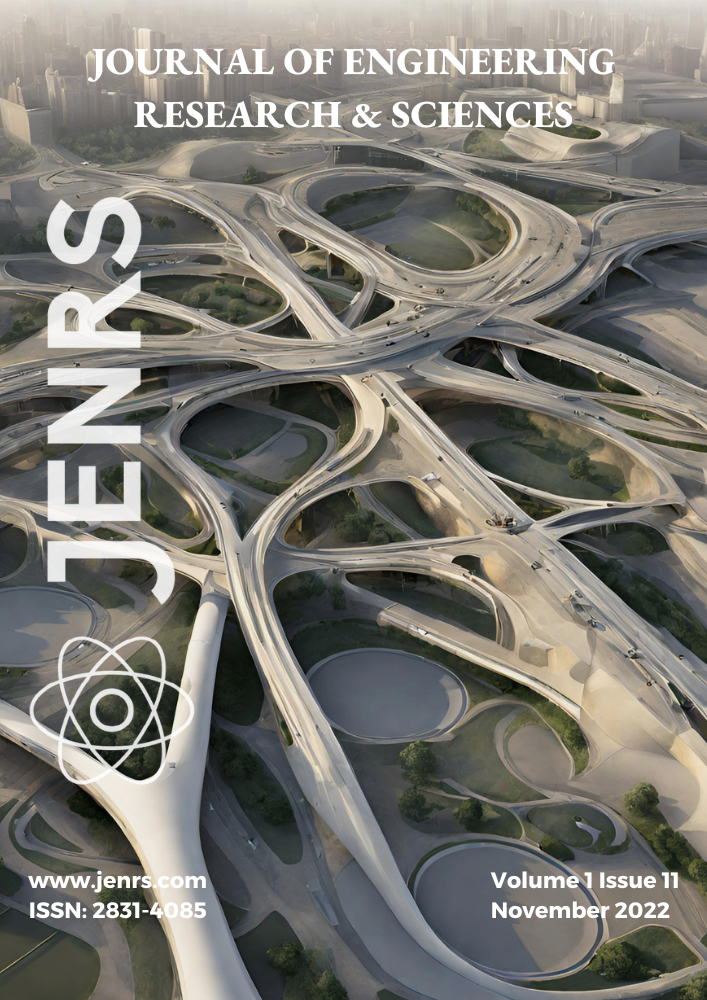
Volume 1, Issue 11
Download Complete Issue
This research issue presents groundbreaking studies that transcend disciplinary boundaries to address multifaceted challenges. One paper offers an innovative approach integrating psychological and contextual factors to better understand human behavior within built environments through virtual reality experiments. Another develops a cost-effective, portable device leveraging machine learning for early cardiovascular disease detection and monitoring in underserved areas. The third proposes novel techniques incorporating recycled materials and rejuvenating agents to enhance the durability and sustainability of asphalt mixtures. These diverse works collectively exemplify the power of interdisciplinary inquiry to generate valuable insights. By seamlessly blending methodologies from various fields, these studies yield practical solutions with far-reaching impacts on improving the human experience, healthcare access, and environmental conservation efforts.
Front Cover
Publication Month: November 2022, Page(s): i – i
Editorial Board
Publication Month: November 2022, Page(s): ii – ii
Editorial
Publication Month: November 2022, Page(s): iii – iii
Table of Contents
Publication Month: November 2022, Page(s): iv – iv
Using Interaction Geography to Explore Building Occupant Behaviors in Virtual Reality: A Pilot Study
Hoa Vo, Peter Huesemann-Odom
J. Engg. Res. & Sci. 1(11), 1-7 (2022);
The sole focus of current occupant behavior research on environmental and contextual factors (i.e., physical attributes) in buildings is a missed opportunity. Psychological, physiological, social, time, and random factors also influence building occupants. In this pilot study (n=10), the authors used Interaction Geography to capture human movements across space and time in a Virtual Reality (VR) museum to dissect building occupant behavior. Results indicated that study majors (i.e., psychological) and personal connections (i.e., social) with the space affected how participants explored and spent time in the VR museum.
Real-Time Acquisition and Classification of Electrocardiogram Signal
Sheikh Md. Rabiul Islam, Akram Hossain, Asif Abdullah
J. Engg. Res. & Sci. 1(11), 8-15 (2022);
Cardiovascular disease (CVD) is the leading cause of death. The transition in cardiovascular disease threatens the economies of the less developed world. An electrocardiogram (ECG) machine is a device that checks the patient’s heart rhythm and electrical activity. ECG signals give crucial information about the heart and numerous cardiac problems, such as coronary artery disease, myocardial infarction, and hypertension, which can be detected with an ECG report. The success rate for cardiac disease diagnosis will rise if ECG signals can be adequately recognized and interpreted. Classic signal processing and machine learning algorithms are utilized to evaluate the ECG signal and detect distinct types of arrhythmia for early treatment and prevention of cardiovascular diseases. To provide a sustainable solution for developing countries, we need to make an accurate diagnosis device that is portable and low-cost. This research aims to create a new low-cost ECG device and interface patients with HealthyPi v3 which is a miniature raspberry pi-based vital sign monitor to record raw ECG signals. We proposed an integrated environment with classical ECG acquisition and classification techniques to obtain the preferable outcome. Also, we allowed us to assimilate with a mobile remote monitoring system to create a dynamic healthcare monitoring environment for the patients. This work implies the acquisition of real-time ECG data via HealthyPi V3 integrated with peripheral capillary oxygen saturation (SpO2) sensor and temperature sensor. The software is designed to read and analyze the hardware system-driven real-time ECG data, heart rate, blood pressure, respiratory rate, and temperature. To categorize the QRS complex of ECG data obtained and analyzed by the hardware-software system for heart disease prediction, Support Vector Machine (SVM) classifier, Convolutional Neural Network (CNN), and Recurrent Neural Network (RNN) is applied where CNN has achieved the highest accuracy while processing the signal.
Enhancing the Contribution of Recycled Asphalt Shingles to Asphalt Binders Using Rejuvenators
Eslam Deef-Allah, Magdy Abdelrahman
J. Engg. Res. & Sci. 1(11), 16-33 (2022);
Recycled asphalt shingles (RAS) have been a valuable recycled component in asphalt mixes for decades. However, research into how the aged and oxidized air-blown RAS binder interacts with the neat asphalt binders in asphalt mixtures is underway. Furthermore, due to the stiffness of RAS binders, RAS-containing asphalt mixtures are prone to significant cracking, particularly at low temperatures. As a result, an innovative technique was developed and used in this study to increase the contribution of RAS particles in the asphalt binder. This technique was primarily dependent on interacting RAS particles with rejuvenators before mixing them with the asphalt binder. Moreover, this technique allowed the oxidized and aged binders in the RAS to absorb aromatics to compensate for the lost low-molecular-weight fractions during the air-blowing process and alter their aged behavior. Five rejuvenators were utilized, including four pyrolysis oils (B2A, P4, P8, and P4D) and one recycling agent (Evoflex). One source of post-consumer RAS was collected, milled, and sieved into two sizes. The rejuvenator was chosen to weigh 45% of the RAS, except for the P4D, which contained a double amount of P4 oil and weighed 90% of the RAS. RAS or the RAS that interacted with oils, was mixed with one source of asphalt binder with a performance grade of 76−16. The RAS with rejuvenator samples weighing 7.5% and 15% of the asphalt binder interacted with the neat binder. The addition of P4D or Evoflex to RAS reduced the stiffness and elasticity of the modified asphalt binders due to the RAS particles’ absorption of aromatics in oils. This trend improved the modified binders’ fatigue and thermal cracking resistance. Milled RAS particles of a smaller size (50-100) reacted with oils more than RAS particles of a bigger size (30-50), which caused stiffer properties for the binders modified with the smaller RAS particle size.

